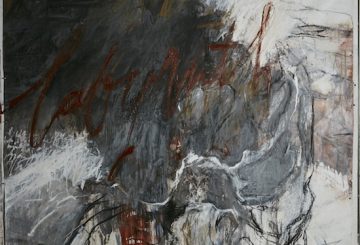We slighted the talent of Lord Andrew Lloyd Webber a couple of weeks ago and now we’re paying the price. As has been pointed out to us by A Reader, Chess had its lyrics written by Lloyd Webber associate Tim Rice but its music was written by Benny and Bjorn of ABBA fame. Further, Miss Saigon was conceived and had its original French lyrics written by Alain Boublil, its music and co-conception mastered by Claude-Michel Schonenberg and the English lyrics were penned by Richard Maltby Jnr. Clearly, Lord Webber had nothing to do with either. We fully apologise for this egregious error. Although we were down in the dumps about our mistake, A Reader also said that the Lord of Music had written Phantom of The Opera, Starlight Express and Jesus Christ Superstar, so we shouldn’t feel too bad about it.
The Walls Are Talking: Man Ray, A Slight Return
Well, we liked it. We said so and we’re sticking to our story. Unfortunately some people aren’t so impressed and just don’t think the exhibition is all it could be. They are the sort of people we should be listening to because, let’s face it, their opinions matter. We are talking about students at the University of Technology newspaper Vertigo.
All through this exhibition I couldn’t shake the feeling that there was something disingenuous about the way the exhibition had been put together. The walls told us all the time of Man Ray’s Dadaist spirit, his association with Duchamp and Breton. It just seems there is something strange about this kind of art being so appreciated by the nice Sydney arts crowd. Dadaists were punks. Many of the artists involved in the surrealist movement were revolutionary not just in their approach to art, as Man Ray certainly was, but also had a revolutionary political vision. Andre Breton’s struggle for a libertarian form of Communism is testament to this.
I don’t think this radical, playful aspect was really relevant to this exhibition. The works were positioned in a tasteful and orderly fashion. The exhibition hardly bucks against the conventions of the gallery. But I get the feeling that maybe the curators were a little scared of doing something daring with Man Ray’s works and wanted to simply let the art speak for itself – which it definitely does. So in the end, maybe it was a good thing, that even today, the art establishment is a little scared of artists like Man Ray.
We were saddened to discover that the author of the review had forgotten to put their name on it, for if they had we could have sought them out, put a friendly arm around their shoulder and said something like, “Young man, let your uncle take you to the bar where he’ll buy you a drink and set you straight.”
We have no idea what the author means when they go on about ‘libertarian’ Communism, or how the resolutely middle class Breton “struggled” to do anything. We resist mentioning that the real Communists were more than a little bemused at their adoption under the second Surrealist Manifesto “Surrealism at The Service of The Revolution”, or that the author is confusing Dadaism and Surrealism. No. We are just wondering what they are talking about when they say that the show doesn’t “buck against the conventions of the gallery”??? Maybe they want all the pictures turned against the wall – would that have been punk enough for you?

